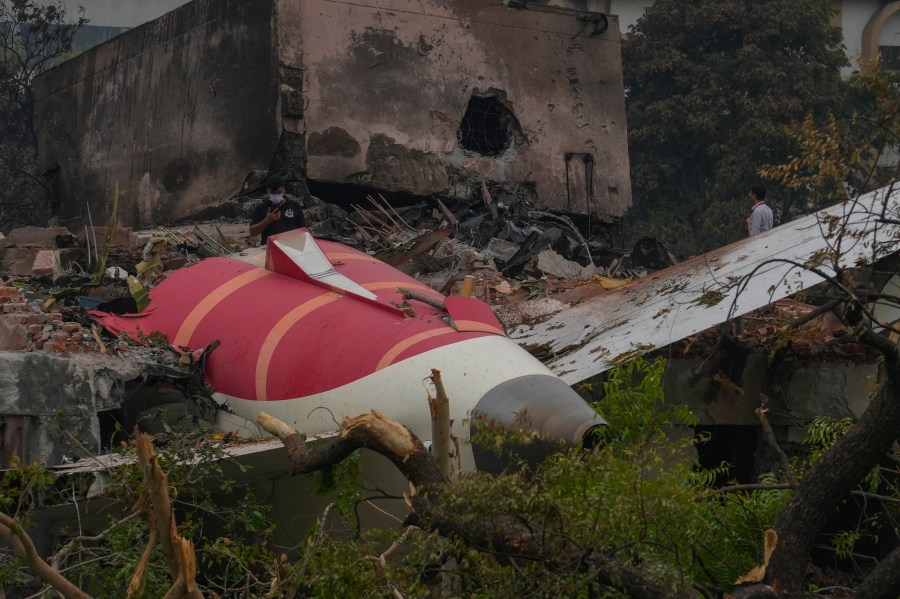Air India Crash Report Reveals Pilot Confusion on Engine Switch

Overview of the Air India Crash Investigation
A preliminary report has revealed a series of confusing events in the cockpit moments before an Air India jetliner crashed, resulting in the loss of 260 lives. The Boeing 787 Dreamliner was en route from Ahmedabad to London when the accident occurred last month. According to the report released by India’s Aircraft Accident Investigation Bureau (AAIB), the plane's engine fuel cutoff switches were almost simultaneously flipped, causing the engines to lose fuel and leading to a rapid descent.
The crash, which is now considered the deadliest aviation incident in a decade, highlights concerns about the positioning of critical fuel cutoff switches. However, the report suggests that neither Boeing nor the engine manufacturer, GE, were responsible for the accident.
Key Details from the Preliminary Report
CCTV footage captured shortly after takeoff showed a backup energy source known as a ram air turbine deploying, indicating a loss of power from the engines. In the final moments of the flight, one pilot on the cockpit voice recorder asked another why the fuel had been cut off. The response indicated that the other pilot did not perform the action.
The report does not clarify which pilot made the "Mayday, Mayday, Mayday" call before the crash. The commanding pilot of the Air India plane was Sumeet Sabharwal, who had 15,638 hours of flying experience and served as an instructor for the airline. His co-pilot, Clive Kunder, had 3,403 hours of experience.
Questions About the Fuel Switches
The fuel switches were found to have flipped from the "run" position to "cutoff" almost simultaneously just after takeoff. However, the report did not explain how this could have happened during the flight. U.S. aviation safety experts have stated that it would be highly unlikely for a pilot to accidentally move these switches. Flipping them to the cutoff position immediately stops the engines and is typically used in emergencies such as an engine fire or upon arrival at the airport.
Despite this, there was no indication of any emergency requiring the cutoff. At the crash site, both fuel switches were found in the "run" position, and there were signs that the engines may have attempted to relight before the low-altitude crash.
Expert Opinions and Ongoing Investigations
Anthony Brickhouse, a U.S. aviation safety expert, raised key questions about the switches. He asked whether they moved on their own or due to pilot actions and, if the latter, why. Air India acknowledged the report and stated that it was cooperating with Indian authorities but declined further comment.
The AAIB, which operates under India’s civil aviation ministry, is leading the investigation into the crash. Most air crashes are attributed to multiple factors, and according to international rules, a preliminary report is due 30 days after the accident, with a final report expected within a year.
Recovery and Analysis of Black Boxes
The plane’s black boxes, including the cockpit voice recorders and flight data recorders, were recovered in the days following the crash and later analyzed in India. These devices provide crucial data such as altitude, airspeed, and pilot conversations, which help investigators determine the cause of the crash.
Air India has faced increased scrutiny since the incident. The European Union Aviation Safety Agency has announced plans to investigate its budget airline, Air India Express, after reports surfaced that the carrier failed to timely replace engine parts on an Airbus A320 and falsified records to show compliance.
India’s aviation watchdog has also issued warnings to Air India for breaching rules related to overdue checks on escape slides and for serious violations of pilot duty timings.
Ongoing Legal and Regulatory Scrutiny
The U.S. National Transportation Safety Board has not commented on the release of the report. However, NTSB chair Jennifer Homendy previously urged the Indian government to maintain transparency in the interest of aviation safety.
As the investigation continues, the focus remains on understanding the sequence of events that led to the tragic crash and ensuring that appropriate measures are taken to prevent similar incidents in the future.
Post a Comment for "Air India Crash Report Reveals Pilot Confusion on Engine Switch"
Post a Comment